What Makes A Good Photograph? – Five Key Elements

by
Kevin Landwer-Johan
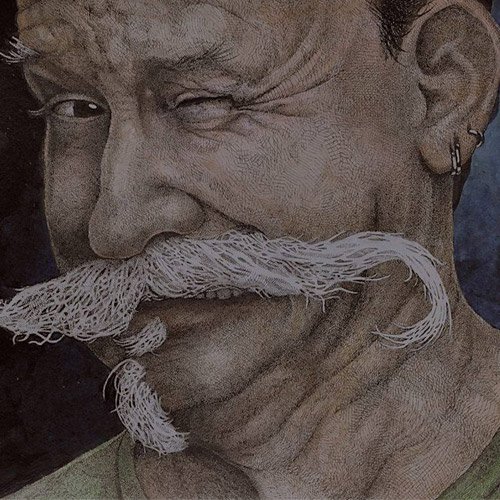
What makes a good photograph?
Many photographers struggle with this question.
A good subject does not make a good photograph. A good camera doesn’t either.
Good photographers make good photographs. But what makes a good photographer?
A good photographer is someone who understands what the qualities of a good photograph are and can implement them in their pictures. These qualities are the focus of this article.
“A good photograph is one that communicates a fact, touches the heart and leaves the viewer a changed person for having seen it. It is, in a word, effective.” – Irving Penn
No matter how interesting your subject is. No matter how new and expensive your camera is. These alone do not make photographs that communicate fact, promote emotion and change people. Let alone hold a viewer’s attention. The qualities of a good photograph reach beyond a good subject and camera.
Effective photographs must include certain qualities to evoke a response from people. Your choice of subject is the most prominent factor in what makes a good photo. But, unless your photos contain other essential qualities, they will be ignored. No matter how interesting you think your subject is.
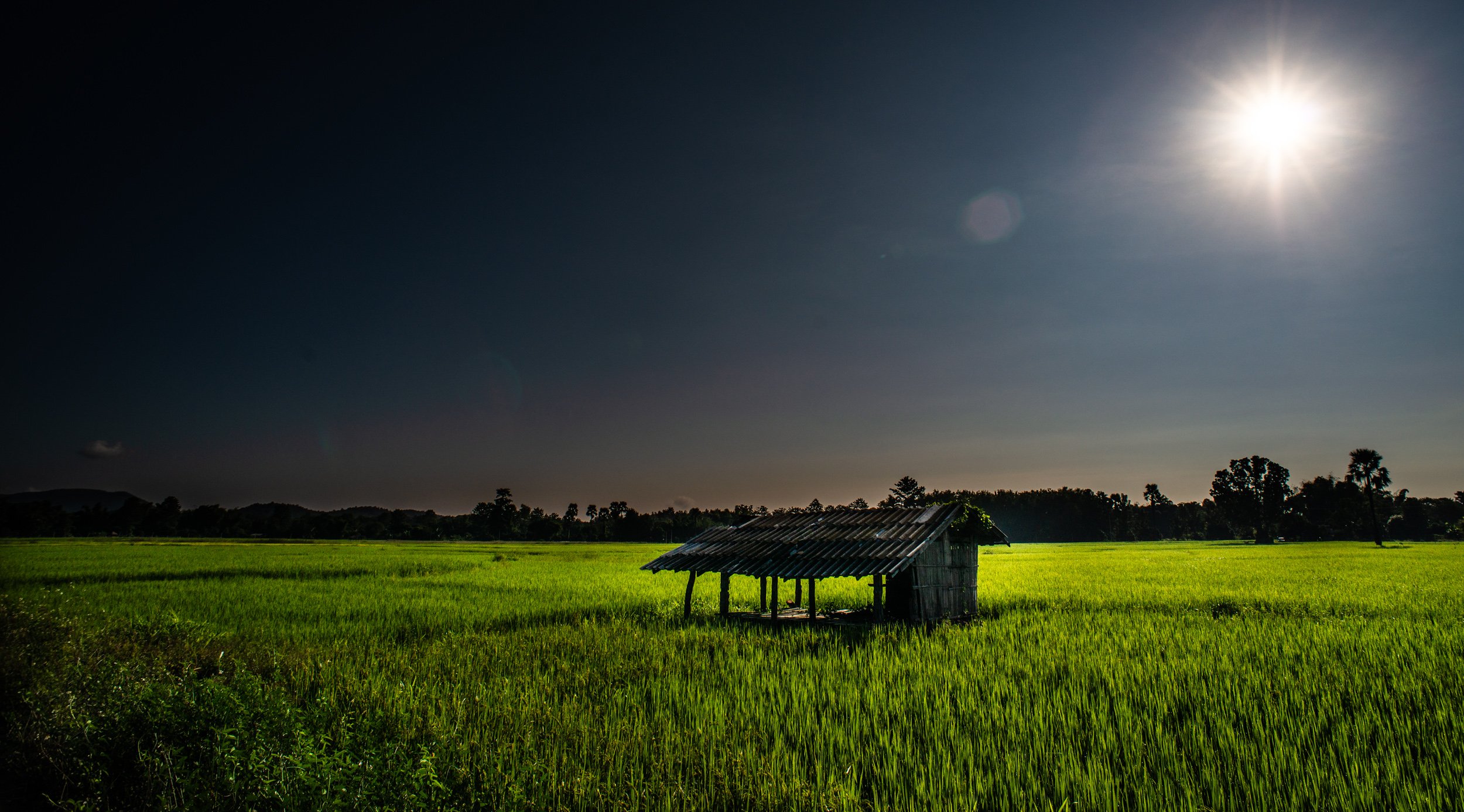
Don’t Rely on Social Media Likes
The number of ‘likes’ your posts receive on Instagram is not a true indication of how good your photos are. Modern ways of viewing photos, largely on social media platforms, have dumbed down the perception of good photography. People do not pay attention to much other than the subject as they scroll through their Instagram feed. Viewing photos on a mobile device is far from an ideal experience. Images displayed on social media are usually too small, low resolution and uncurated. Platforms like Instagram allow people to rapidly scroll through and like photographs. You can do this without paying much attention to them. This is not a good way to determine the qualities of a good photograph.
What you photograph is a personal choice. How well you photograph it determines the response your photos receive from others. Whatever your subject is. Sometimes snapshots of an extraordinary subject will move people, but not often. What makes a good photograph is not determined by the subject alone. There are certain elements that make a good photo. It’s these things I am writing about here.
The qualities of a good photograph include:
- Light/Exposure
- Composition
- Color/Tone
- Timing
- Relationship
These are the five qualities of a good photograph. Choosing to photograph the most amazing subject is not enough. If these qualities are lacking, the image does not contain the elements of a good photograph. It will not captivate the viewer. Capturing an image incorporating every one of the five qualities is extremely challenging. This takes practice and accumulated skill.
The integrity of a photograph depends on how well these qualities are represented. This is so, regardless of the subject of the photo.
I’ve written this article with a focus on what the qualities of a good photograph are. It has very little reference to post-processing and the results this has on our photos. I will at times use example photos and at other times I will not. I want readers to practice visualizing photographs.
 A Step by Step practical guide to What Makes A Good Photograph is available on my Buy Me A Coffee page. You can download the guide, it’s a companion to this article. The guide takes you through 7 practical steps that will help you take better photographs.
A Step by Step practical guide to What Makes A Good Photograph is available on my Buy Me A Coffee page. You can download the guide, it’s a companion to this article. The guide takes you through 7 practical steps that will help you take better photographs.
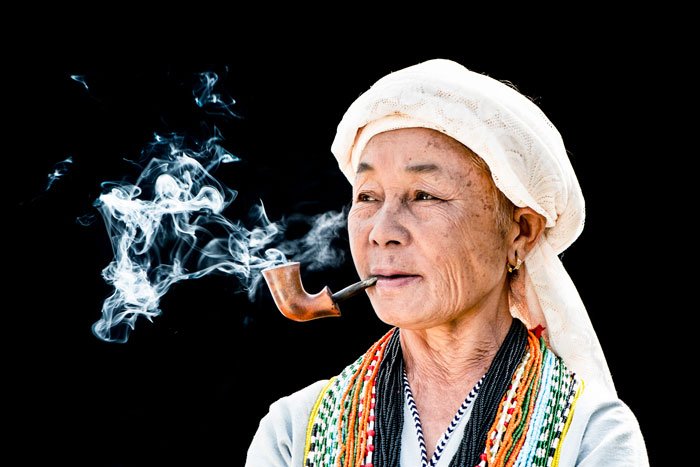
5 Qualities of Good Photographs
“Of course, there will always be those who look only at technique, who ask ‘how’, while others of a more curious nature will ask ‘why’. Personally, I have always preferred inspiration to information.” Man Ray, a visual artist most well known for his photography.
Everybody with a camera wants to take better photos. Even seasoned professionals, including myself. We want to take better photos than we have previously taken. If you are reading this then I guess you are one of us who wants to take better photos. We must ask “What are the qualities of a good photograph?” “How do we create better photos?” “What are the secrets of better photography?” “What are the qualities of a good photographer?” These are all good questions that will help develop the quality and style of your photos.
Is the Subject One of the Main Qualities of a Good Photograph?
Your subject is your choice. It might be a sunset? A pretty woman? A handsome guy? An athlete at their pinnacle moment breaking a world record? An iconic celebrity getting caught off guard pulling a funny face? A tiger about to pounce on its prey? A beautiful landscape? Any of these might be great photos. But, without certain photographic elements, you might not look twice at any of them.
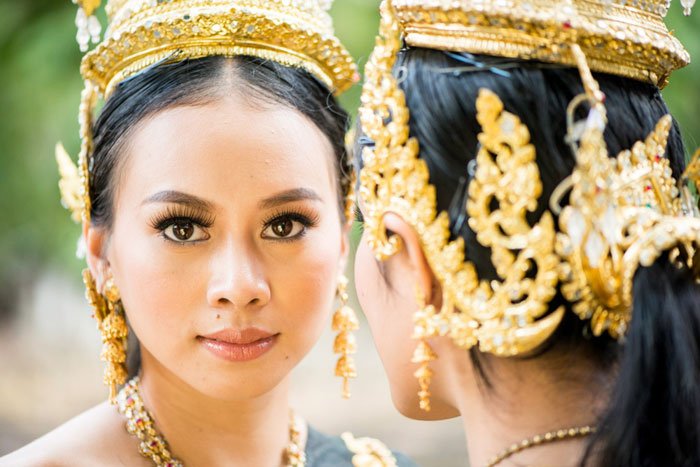
Our choice and taste in subjects to photograph is incredibly varied. In this article, I remain generic about subject material. I wish to focus more on the qualities of a good photograph, regardless of what you are photographing.
The Qualities of a Good Photograph
Four qualities of a good photograph can be measured by some technical standards. These are:
- Great Lighting + Careful Exposure
- Deliberate Composition.
- Careful Timing.
- Pleasing color and/or tone range.
When you have an interesting subject, it’s possible to apply each of these elements with technical ‘correctness.’ Creating pictures with such technique will show the qualities of a good photograph. But there is another important quality to factor into what makes a good photo unique. I’ll address it later in this article. First, let’s take a look at these four elements.
Integrating these elements into a single image is challenging. Learning to understand each of these qualities will enable you to become a better photographer. Sure, there are other aspects to creating good photos, but I believe these five elements form the basis of all good photographs.
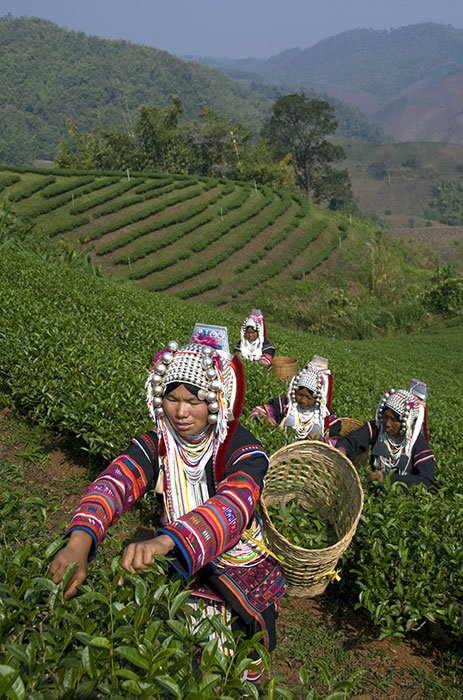
Qualities of a Good Photograph
#1. Great Lighting + Careful Exposure
“Embrace light. Admire it. Love it. But above all, know light. Know it for all you are worth, and you will know the key to photography.” – George Eastman, founder of Kodak.
Light is the substance and essence of photography, not of photographs, but of photography. It is one of the essential qualities of a good photograph. Where there is no light it is impossible to make a photograph. Light is the raw material of photography. We are all very familiar with light and have been aware of it since before we were born. For most people awareness of light remains in their subconscious. They don’t really think about it. If we want to become truly creative photographers we must begin to consider light with our conscious minds.
Writing With Light
The word ‘photography’ comes from the Greek language. Phōtós means light and gráphō meaning writing/drawing, so, together the meaning is drawing/writing, with light. To me, photography is largely about storytelling. We use light to tell a story with our images.
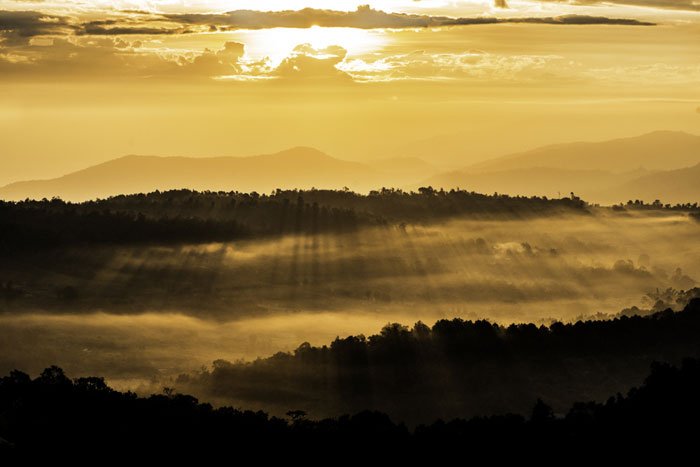
Since I bought my first camera I’ve known the more I can ‘see’ and understand light the better photographer I will become. Being able to recognize differences in lighting conditions aids us immensely as photographers. Superb light is one of the definitive qualities of a good photograph.
I do not subscribe to the popular belief that light in the middle of the day is not good for photography. If we’re out with our cameras on a summer’s day and the sun is high in the sky we can still make great photos! Wherever there is light you can make photographs. Learning to manage the light, and your exposure helps determine the qualities of a good photograph. Some subjects and locations will photograph better in some light than others. So we must learn to anticipate the lighting conditions. Then plan to take photos when the light is best for the type of photographs we wish to create.
Two Categories of Light
To help us understand light and how it affects the photographic process we can put it into two categories. ‘Hard’ light and ‘soft’ light. Hard light originates from an apparently small source. It is relatively bright and casts a shadow with hard edges. Soft light generally originates from a large light source. It casts shadows with soft edges or no shadow at all.
I say ‘apparently’ when talking about light sources because the size is relative. The distance the light is from your subject and the strength of the light is significant.
The sun on a cloudless day, for example, is a hard light source. Light from the sun casts hard shadows. Even though the sun is a huge light source, because it is so far away, it is apparently small. On a cloudy day, we will see soft or no shadows. This is because the clouds diffuse the sun’s light, scattering it and making it softer. The clouds affecting the light are tiny compared to the size of the sun. Even so, they have the effect of creating a large, soft light source.
Where there is more than one light source and/or reflected light this will have an influence on light quality. It will affect how hard or how soft the light appears. The relative brightness of each light source and location of the light source also has a significant effect. These factors determine in part how we see our subject and how our camera will record it.
Hard Light
In situations with hard light using your camera’s exposure meter set to ‘spot meter’ helps get a more accurate exposure. Taking a reading from the brightest part of our composition, you might get a reading of 1/250th sec, f16 at ISO 100. Taking a reading from the darkest part of the same composition you might get 1/60th sec, f2.8 at ISO 100. That’s a seven stop difference. Most cameras will not be able to produce well-exposed detail in both the highlight and the shadows. Because of this limitation, you need to be more creative. You must control your exposure and composition to gain the best exposure you can.

Soft Light
Photographers often prefer to work in softer light. This is because camera sensors and film have a limited ability to record detail at tonal extremes. The extreme dark and bright ends of the tonal range produced by hard light cannot be recorded in a single photo.
Taking an exposure reading of the same composition mentioned before on a cloudy day would show a lower contrast range. You might get a reading from the brightest part of the composition of 1/60th sec, f8 at ISO 100. Taking a reading from the darkest part of the same composition a reading of 1/60th sec, f2.8 at ISO 100 is likely. That’s a three stop difference. This is well within the capability of most digital cameras to produce a well-exposed image. There will be detail in the brightest and darkest parts of the composition.
Making photographs where the light is softer, with a narrower dynamic range, affords you greater flexibility. It is generally easier, as you are able to capture better-exposed detail. But easy isn’t always best and you will not always want to see all the detail. I believe it’s possible to make the best photos when you are able to light subjects with me most appropriate light source. The style of photography you want to create will determine the type of light you use.
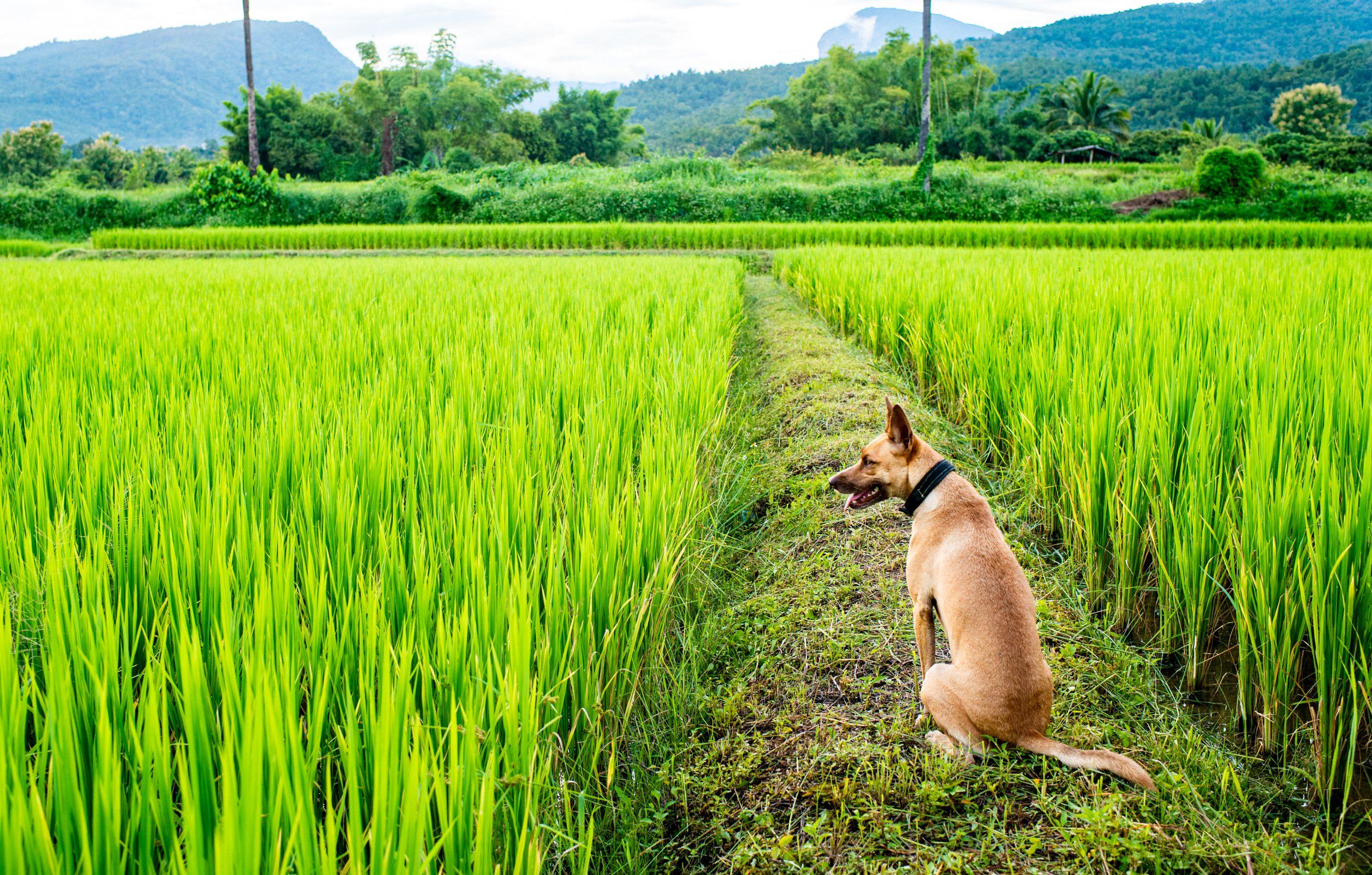
Are you a begining photographer? You may be finding some of this article difficult to grasp. Once you have an understanding of the basics of camera use it will make more sense. Please check out my online photography course where I will teach you how to get the most from your camera.
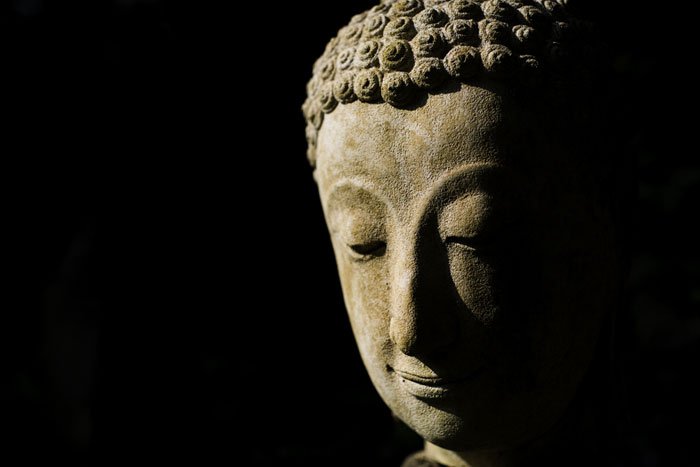
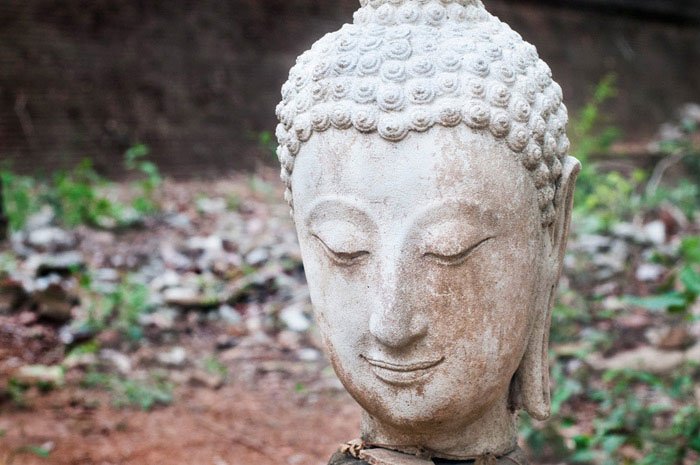
Hard vs Soft Light
My favorite example to illustrate this is my two photos of the same Buddha statue. I took them on different days. I made photo #01 at 3 pm on a sunny October day at Wat Umong in Chiang Mai, Thailand. My shutter speed was 1/8000th sec, the aperture was set to f2.8 and ISO was 400. I made photo #02 at 2:15 pm on an overcast day in June at the same location. My shutter speed was 1/60th sec, the aperture was set to f5.6 and ISO was 640.
Photo #02 reveals far more detail across the whole composition. The tone range fits well within my Nikon D800’s dynamic range. The subject is nice, but it’s a pretty boring photo. In photo #01 the tonal difference is vast. It reaches far beyond my camera’s dynamic range. It is a much more satisfying photograph. Photo #01 displays more qualities of a good photograph than Photo #02.
Light and Subject Relationship
The relationship between the light and the subject is very significant. Some subjects will photograph better under hard light than others. Some subjects will photograph well under either hard or soft light. The resulting images will be very different. For example, a landscape might appear vibrant and alive when photographed on a sunny day. The photo will be warm and inviting.
The same landscape photographed early in the day, before sunrise, might appear more sullen and drab. At this time of day, the light is flat and dull with very little contrast. You could still take a pleasing image. It will be one with a very different mood.
Variation in light between the hardest and softest is immense. Within this range, you must find the most pleasing light to create your photographs.
Photographing with a single light source and little or no reflection you are limited in options. Your light will be hard or soft. Once you introduce other light sources or reflected light, your creative options become more diverse. By adding light from alternative angles and any manner of sources (soft or hard) you can manipulate the tone range within your photographs.
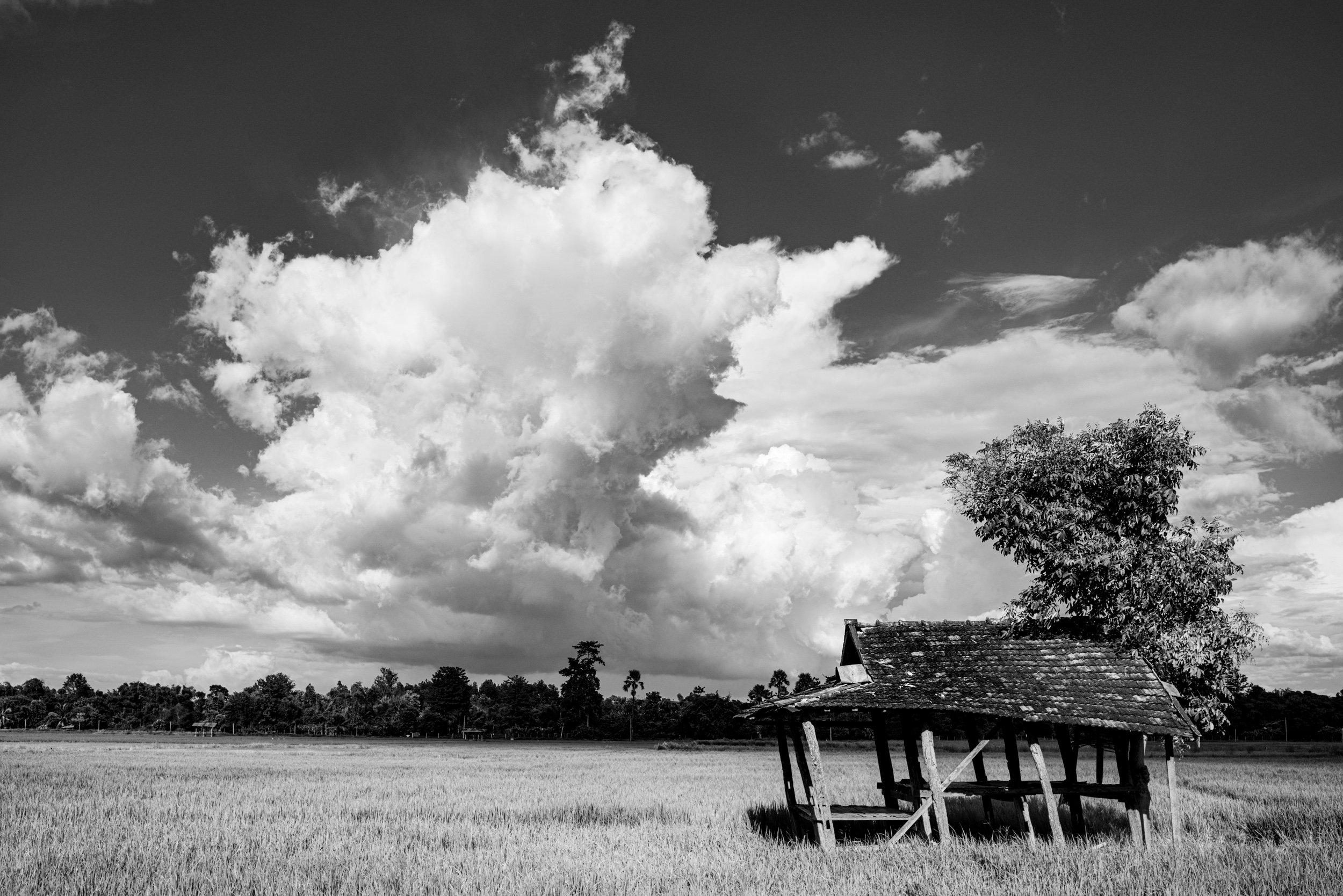
Outdoors in the Sun
Making a portrait outdoors on a sunny day challenges many photographers. Using only the sun as your light source and no reflector, you will face some challenges. You can have our subject stand facing the sun. This will result in dark shadows around their eyes and under their nose and chin. They will also be squinting their eyes.
If you turn them sideways any degree you will have some of their face in shadow and some in sunlight. Standing them with their back to the sun we will have even light on their face. But you may encounter problems with the sun’s light flaring in your lens. You might also get an overexposed background. Some color cast reflecting in their face might also happen.
How would introducing even one more light or reflector affect your portrait? The tone range in your composition will become narrower. This is because the shadows would be diminished by the added light. Your camera will capture a fuller dynamic range of tone within your composition.
Many factors affect the quality of light. The more you are able to see and appreciate the light you work with the more creative you can be. Your results will display the qualities of a good photograph.
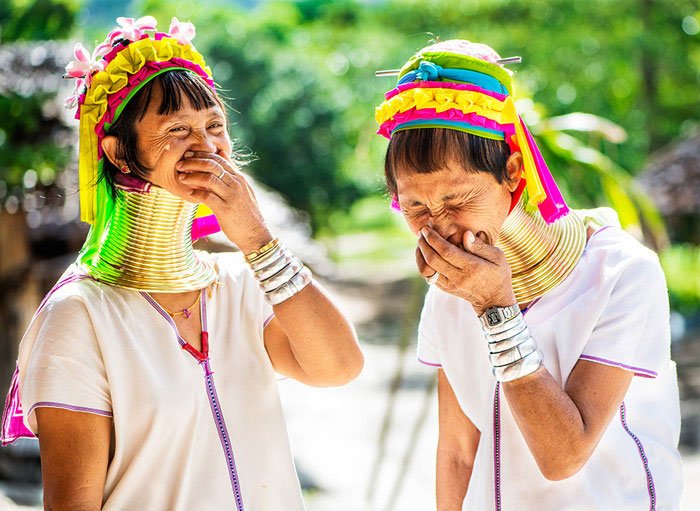
Qualities of a Good Photograph
#2. Engaging Composition.
“Now, to consult the rules of composition before making a picture is a little like consulting the law of gravity before going for a walk.” Edward Weston, photographer.
Composition is how you arrange the elements within the frame of your photograph. It’s about what you include and what you leave out. You can control your compositions by your choice of lens and your point of view from where we take our photograph. Sometimes you can move the physical elements you are photographing. Composition is another one of the essential qualities of a good photograph.
Rules of Composition
You can study the rules of composition and apply them rigidly. Or you can consider them as guidelines. But following these rules does not always produce the most engaging compositions. Aim to make sure every element of your composition is meaningful. Does all the subject material in your frame add something to the photo? Is your composition balanced? When the essential elements of your composition are well balanced your photos will be more engaging. Regardless of whether you follow the rules of composition or not. I hope this does not sound too abstract! Let me explain …
You can use the rule of thirds. Leading lines will help draw a viewer’s eye to your subject. Symmetrical framing can be implemented, or any other composition technique. These ‘rules’ will give you well-composed photographs when you apply them well. Don’t use any rule of composition because you think you must use one. This will rarely produce an appealing image. Creative composition don’t happen by merely applying a few rules and techniques.
Sticking To The Rules – Or Not
Do you try to apply some compositional rules because you think you must? You may find other aspects of your photograph will suffer. The end result will be unattractive.
For example, imagine you have a subject framed up and there’s a strong leading line drawing your eye to the subject. This is fine, but there’s a distracting background. If that’s the case you’d be best to abandon the idea of using the leading line. You need to explore other possibilities to compose your photo. If you are always looking for situations where you are able to apply the rules you’ve learned, you may miss seeing what could make the best photos. I rarely think of composition before I have selected a subject. I only sometimes think of compositional rules to apply when I am taking photos.
Many photography teachers expound on the benefits of the rules of composition. Then they tell you to break them. I would encourage you to learn the rules so well you can put them into practice subconsciously. Doing this, you can make use of them in your photography most creatively.
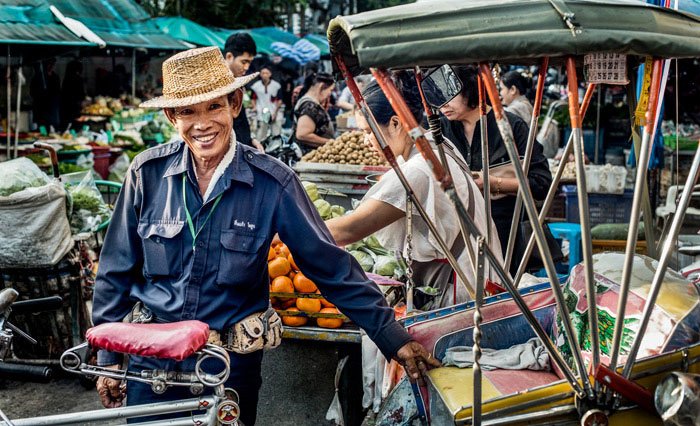
Why Do We Have These Rules?
Painters developed the compositional rules over many centuries. Students and the great masters alike apply these rules on their canvases. Your tools for creating pictures are very different. As is the amount of time you take to create your pictures. Few of us will spend years or hours to make a photograph the way a painter creates their art. The qualities of a good painting will differ from the qualities of a good photograph.
Another significant difference is the ability a painter has to manipulate all the elements in their paintings. A painter can pose a person in their studio in Paris and paint their portrait. For the background, they could paint in the Sydney Opera House if they wish to. The painter is unbound from their location, as a photographer you are bound to yours.
I am not considering post-processing here. This is only relevant to composing and taking single photos with your camera. Yes, it is possible to have a large degree of compositional control over what you include and exclude from your photographs during post processing. But I am talking broadly here as most photographers do not physically manipulate the subject matter of their photographs.
Photographers Have Limitations
Painters can have infinite opportunities to compose and recompose their paintings. This is most true for painters who use oil colors. One day a painter might like the idea of including a building as a background to a portrait they are painting. The next day the painter could decide they don’t like it and paint over the building and replace it with a tree and a river. The painter has the ability to manipulate composition as much as they like. Photographers are limited by the camera more than a painter is by brushes, color, and canvas.
The rules of composition have developed over time with a different medium. As a photographer, you can adopt and adapt these rules to your advantage as you create images. But you cannot separate them from the other elements I am discussing here. Balance your compositions of beautiful/interesting subjects. Incorporate lighting, timing, color, and tone and you will be creating engaging photographs.
Qualities of a Good Photograph
#3. Careful Timing
“To me, photography is the simultaneous recognition, in a fraction of a second, of the significance of an event as well as of a precise organization of forms which give that event its proper expression.” Henri Cartier-Bresson, photographer.
Henri Cartier-Bressoncoined the famous term ‘The Decisive Moment’. It sums up another essential element in good photographs. The moment we choose to open our camera’s shutter. This has a significant influence on the qualities of a good photograph. Depending on your subject, this could be a split-second decision or it may even take weeks and months.
Cartier-Bresson, regarded as the godfather of photojournalism and street photography. He said:
“To me, photography is the simultaneous recognition, in a fraction of a second, of the significance of an event as well as of a precise organization of forms which give that event its proper expression.” (as translated from his book The Decisive Moment.)
Cartier-Bresson didn’t do much landscape photography. His reference to recognizing the fraction of a second is relevant to his chosen genre of photography. This, however, does not diminish the importance of careful timing in any photography genre.
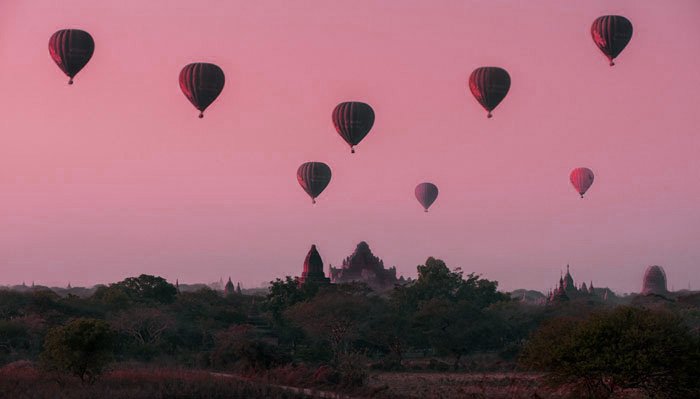

Timing Is Important – Whatever Your Genre
We had to wake up early to arrive at a suitable vantage point when visiting Bagan. Our goal was to photograph the hot air balloons at sunrise. This is as important to capturing the decisive moment as reacting fast is when something unexpected happens. Obviously, the urgency of timing my photo when the wheel from the cart came flying off is far different. With the balloons, as with any moving subjects, timing your photos when all the elements form an engaging composition, is critical.
Ansel Adams, the famous landscape photographer, was well known for timing his photos. He understood the qualities of a good photograph. He timed his work with the seasons and the sun. Choosing the optimal time of year and time of day when he knew he could achieve the most pleasing exposure. In his work, we see careful timing in relation to lighting and composition. He would calculate the best time for the right light so he could get all the tonal detail he desired. This ensured his large-format, black and white photographs were stunning.
Anticipate and Plan
Anticipation and planning are two important factors in achieving well-timed photographs. Few remarkable action photos happen in the spur of the moment. There’s usually a certain amount of preparation.
In sports photography, the most successful photographers specialize. They study their sport. They will know the teams, the players and their style. This is so they can anticipate how the action will be played out during the game or event. Wildlife photographers research locations. They track their ‘prey’ and position themselves in concealed locations. Premeditating the arrival of the species they aim to photograph is essential.
Being prepared to capture the decisive moment takes far more effort than bringing your cameras up to your eye.
It does not always need to be so complex. Our preparedness can be rather more casual depending on what we are photographing.
Often when I take photography workshops at the local fresh markets I capture fleeting slices of life. I’ve been visiting the same markets for many years now. I’m used to the flow and rhythm of the place and its people. This makes it easier to predict the action than when visiting for the first time.
Whatever situations you find yourselves in to make photographs, it’s important to observe what’s happening around you. Learn to anticipate when the most interesting action to photograph will take place.
Compose in Anticipation
Compose your image in anticipation of the action you hope to capture. This is a method used by most of the best street photographers and photojournalists. Find a location that will afford us an interesting composition. One with a strong element to support our subject. Look for good lighting and a pleasing background. These things will help us produce more captivating photographs.
There’s nothing wrong with photography on the fly. But, if you are able to incorporate as many of the elements we are discussing into your photographs, the more satisfying they will be. Precise timing is without doubt one of the qualities of a good photograph.
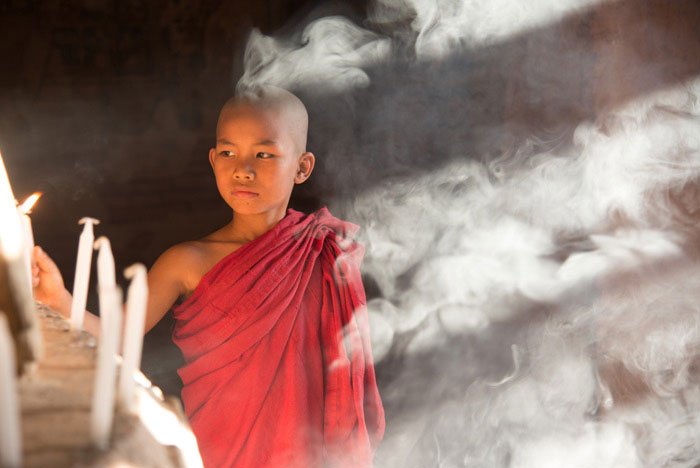
Qualities of a Good Photograph
#4. Resonant Color and/or Tone Range
“The ability to see the quality of color and it’s different relationships is an art, as well as a skill that must be honed through continual exercise.” Nevada Wier, travel photographer, and author.
Light is the essence of photography. Color and tone are the expressions of reflected light captured by our cameras. Think of light as the raw material of photography. As flour, yeast, salt, sugar, and water are the raw materials of bread, color and tone are like the baked loaf of bread. Color and tone are what we see when we look at a photograph. In reality, we do not see light. We see what light is reflecting off. Color and tone represent this in our photographs.
Incorporating Resonance
Incorporating resonant color and/or tone into your photographs results in better pictures. Color/tone in your composition is as important as the elements that make up our composition.
Referring to ‘resonant’ color in our photographs I am meaning color which affects the viewer. It has an impact because it is significantly incorporated into the photo. The same goes for ‘resonant’ tonal range in our black and white photos. These are further qualities of a good photograph.
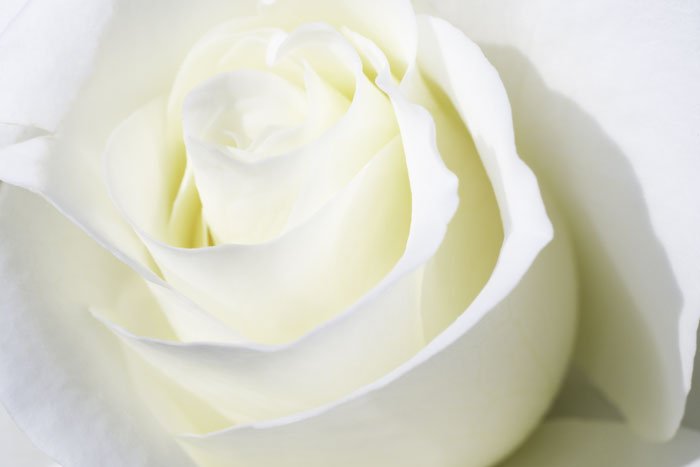
The color of this cream rose resonates with a romantic, gentle softness. While the red rose is less subtle to our eye. Maybe we still see it as romantic, but not with the same gentle, softness of the cream rose. In both images color is the key element in how we perceive the flower.
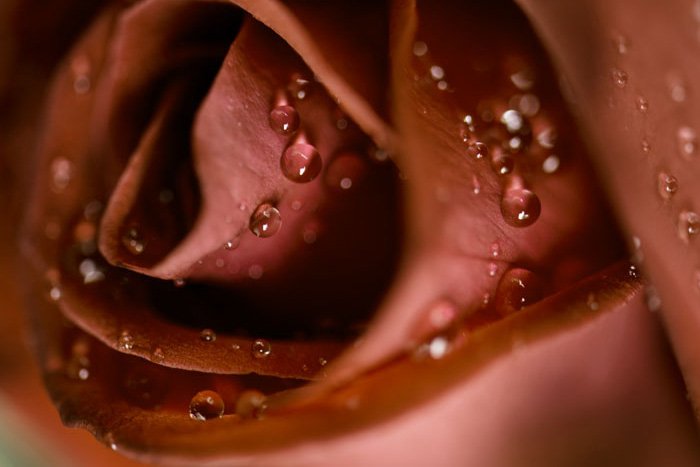
I have rendered the same two images in black and white. Can you see how the tone of each photo results in considerable differences?

Incorporating Diversity of Color
As we incorporate a diversity of color into our photographs we must be aware of the relationships between the colors. Does the color in our frame support the overall composition? Is your photo more interesting because of the color/tone?
If you find the color in your frame is not pleasing you will need to recompose. Or consider rendering the image in black and white.
Imagine you are photographing a summer landscape. You have chosen to convey a soft, harmonious feeling. So you must take care to ensure the colors support what you want to convey. Soft greens and golden colors fill most of your composition. If there is one element that’s a contrasting color, say, an electric blue car, this will be distracting. You will be best to remove the blue car or recompose your picture. By eliminating the contrasting color from your composition you can convey the soft feeling you intended.
In another scenario, the interruption of harmonious color may be advantageous to you. If, for example, you were on your way to a football match. Everyone in the crowd is wearing the home team’s signature bright yellow color. Then you come across a small group supporting the opposing team. They are wearing their team’s signature red color. The contrast in color would add a rich dynamic and resonance to your photographs.
In each of these examples, it’s unlikely you would render the images in black and white. The role color plays in each photograph is fundamental to the feeling you want the photos to convey.
Visualize In Black and White
The absence of color in a photograph leaves a far greater reliance on the tones in the image to make it work. When I started taking black and white photos I began to appreciate how important it was to pay attention to the light. I started to understand tone.
Many photographers who work in black and white learn to visualize in black and white. Looking at a scene and disregard the color helps you to be conscious of how the light is affecting your composition. It does take some practice, but if you enjoy producing black and white photos it will be worth the effort.
Technical purists will tell you that you must show a full tonal range. You must include black, white and a large variance of grays. They will tell you this is essential for acceptable monotone images. I do not agree. I don’t believe a good photograph can only happen if it adheres to a set of technical rules. Photographing in hard light and exposing for the highlights can produce powerful black and white images. These will have little or no grays at all. A lot of popular street photographers use this technique effectively.
As you develop your awareness of the tone range and colors you’ll be able to better frame your compositions. You can choose how you wish to expose your photographs. In doing this you are combining the qualities of a good photograph into one frame.
Qualities of a Good Photograph
#5. Connect With Your Subject in a Meaningful Way
“Photography is the art of observation. It has little to do with the things you see and everything to do with the way you see them.” Elliot Erwitt
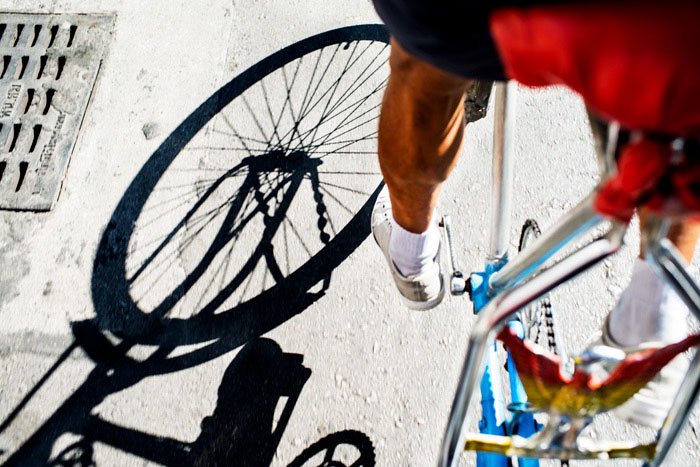
Camera: Nikon D800, Lens: 35mm, Settings: f4, 1/320 sec, ISO 100
As I stated before, the qualities of a good photograph can be very elusive. They can be difficult to integrate into a single image. Learn to look for these qualities. Appreciate them and incorporate them into your photographs. As you do you will see a marked improvement in our work.
Implementing these techniques is easier the more intimate you are with your camera. It becomes easier as we practice. Artistic expression of any form has more impact when the artist is familiar with their technique. The more they practice the more they create with intuition.
Knowing your camera intimately will free us up to be more creative with it. Understand how it functions. What dials to use to set the exposure well. Know where the most essential settings are in the menus and when you are best to adjust them. If you’re pre-occupied figuring out how to use our spot meter, for example, you will be distracted from connecting with your subject. The more using your camera becomes second nature, the freer we will be to connect with our subject. You will follow your intuition as you take photographs.
How we connect with our subjects is our creative expression. It influences how we compose, time, expose and use color and/or tone in our photographs. It is the personification of our expression based on how we relate to our subject.
Beyond Clichés
The qualities of a good photograph tend to reach past obvious clichés. They will stimulate a response from the viewer. Achieving this quality in your photographs depends on the relationship you have with your subject. Whatever your subject may be. If you are distracted trying to figure out our camera settings you will not be so open to your environment. You will not be so ready to relate to who or what you wish to photograph. Once you have learned the technical functionality of your camera you will be ready to explore how you see your subjects. You will begin to express your experience through your photographs.
Having learned to use your camera so you can make well-exposed photographs intuitively will free you up. You can then focus on creating photographs that convey not only what you saw. You will convey your experience of that moment in time.
 A Step by Step practical guide to What Makes A Good Photograph is available on my Buy Me A Coffee page. You can download the guide, it’s a companion to this article. The guide takes you through 7 practical steps that will help you take better photographs.
A Step by Step practical guide to What Makes A Good Photograph is available on my Buy Me A Coffee page. You can download the guide, it’s a companion to this article. The guide takes you through 7 practical steps that will help you take better photographs.
I hope you have enjoyed reading this article. Please take a look at my Online Photography Workshops. Or visit us in Thailand for a photography workshop.
If you’re looking for work, check out Photographer Jobs on Jooble.
Further Reading
If you’re heading to Chiang Mai take a look at my blog post Best Tested Tips for Travel Photography Etiquette in Thailand.

Please more of these great articles. I like the way you convey ideas in a simple way that’s easy to understand. Thanks!
It sure was interesting when you said that good photographs include great lighting and deliberate composition. My brother will surely take note of this as he looks for a surprise proposal photographer. He said that he wants to only work with a professional that can show him great photo portfolios as he wants all the photos of his fiance when he proposes 3 weeks from now to be truly memorable.
I love that you talk about the benefits of photography. I remember back in the days. I used to bring my camera and took photos as a remembrance in every new place I visited. I mostly like to take photos of sunrise and sunset, same with the beauty of nature. Thanks to the latest technology, we can now preserve those old photos and make those old memories new again.
I love photography it caught my interest when you discuss that No matter how new and expensive your camera is. These alone do not make photographs that communicate facts, promote emotion and change people. Let alone hold a viewer’s attention. The qualities of a good photograph reach beyond a good subject and camera. Effective photographs must include certain qualities to evoke a response from people. Your choice of subject is the most prominent factor in what makes a good photo. I agree that photography needs passion in every photo taken.
I think passion makes all the difference between an OK photo and a great one!
Great breakdown of the essential qualities! Understanding lighting and composition is truly foundational.
When it comes to color, do you find that following color theory is always necessary, or can photographers achieve strong visuals by breaking the rules?
Great insights on what makes a photograph truly stand out! It’s fascinating how a good photo requires the perfect balance of composition, lighting, and emotion. I’ve found that using tools like Remini APK can really help bring out the best in older or lower-quality images, enhancing details that might otherwise be lost. Thanks for sharing these essential qualities – they’re incredibly useful for anyone looking to improve their photography skills